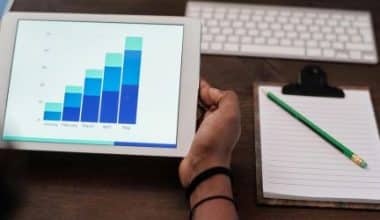I was initially intrigued by the idea of geotracking when I began to explore the tremendous potential of digital marketing. It struck me as both groundbreaking and rather obtrusive. However, as I learned more about its possibilities, I saw how businesses might use geotracking to provide personalized and seamless consumer experiences. In this essay, I’ll give insights on how businesses use geotracking, supported by facts and personal experience. Whether you’re an experienced marketer or just starting out, these techniques will help you understand the power of geotracking and how it affects client experiences.
What is Geotracking?
Geotracking is the technique of recognizing and tracking the whereabouts of a person or device by GPS, Wi-Fi, or cellular data. Businesses utilize geotracking to collect real-time location data to better understand client behavior, preferences, and movement patterns. This technology allows businesses to provide personalized experiences, improve service delivery, and increase customer happiness.
Why is Geo-tracking Important for Businesses Today?
#1. Anti-theft/anti-loss solution
It’s no surprise that geo-tracking allows you to track the device’s whereabouts in real-time. Keeping track of your workplace devices can be difficult when you have a mobile staff spread across multiple locations. Geo-tracking allows you to easily locate your gadgets if they are missing or stolen using an app. Powerful MDM solutions, such as Scalefusion, not only enable you to instantly locate and reclaim a lost or stolen device but also remotely lock and wipe it to remove vital business information for corporate security.
#2. Tracking Productivity
Managing distributed teams from an office in one corner of the world is a monumental task. Geo-tracking can benefit line managers and supervisors the most by providing real-time visibility into team locations. With Scalefusion MDM, you can improve remote team monitoring capabilities by providing complete location reports. You can browse and download detailed location information for your Android, iOS, and Windows 10 devices on a specific day and time.
#3. Employee Safety
Several industries, like construction, mining, and logistics, have a remote workforce that is continuously on the move and frequently operates in hazardous regions. Admin can follow the physical locations of these individuals, which is crucial for their safety and the security of corporate data. During disasters or emergencies, your headquarters or command centers can quickly respond by providing accurate real-time information on personnel locations.
#4. Reduced administrative burden
Finally, whether you are an IT administrator or a supervisor, you can reduce the frequency of phone calls to your remote staff. Geo-tracking provides a bird’s-eye view of your device inventory and remote workforce. Scalefusion also allows you to set automated warnings based on predefined geofences, which reduces your administrative effort.
Key Features of Geotracking Systems
#1. Scan the location
Begin by checking for this feature: can your UEM retrieve the live position of enrolled devices on the network?
#2. Location tracking
This function periodically updates the device’s position based on the period specified by the administrator.
#3. Location Reports
This feature allows you to access information about the enrolled devices’ location history and filter these reports depending on recorded dates.
#4. Force enable location
There may be several bad apples in a company that wants to avoid this level of monitoring, thus the UEM you chose should have a feature that requires the user to allow device location at all times on their work devices.
#5. Geofencing
This is a game-changer for device management skills. Geofences are virtual location restrictions created by IT administrators. This allows administrators to create and enforce various policies and limitations on devices within the designated geofence. This can also be used to render a device non-compliant if it goes outside of the geofence.
Using dynamic grouping and geofencing, administrators may send regulations to many devices that are grouped together, as well as conveniently monitor devices that leave the group due to non-compliance.
Organizations can then apply harsh security policies to non-compliant devices, or in the worst-case scenario, remove them from the company network entirely.
Which Industries Will Benefit the Most from the Geo-tracking Feature?
Geo-tracking works like a charm in every industry that is researching mobility. It monitors the position of thousands of mobile devices and provides insights into your workforce.
The following industries can benefit the most from geotracking:
#1. Logistics & Transportation
Logistics and transportation companies employ geo-tracking to dramatically increase their remote monitoring capabilities, allowing businesses to watch and track the movement of their cargo. Geo-tracking is widely utilized by logistics businesses to determine the best route to take and to provide better customer service, demonstrating the integration of logistics digital transformation in improving operational efficiency and customer happiness.
#2. Delivery Services
Since the pandemic, the number of doorstep deliveries has increased significantly. Geo-tracking allows both businesses and customers to check the status of their orders in real-time and trace their position in the event of a delay. Businesses can also examine the time spent by their staff between successive deliveries to track employee productivity.
#3. Taxi Services
With geotracking, consumers may order a cab and check its real-time location, including an estimated time of arrival (ETA). This makes hailing a taxi hassle-free. Most taxi services allow passengers to share their locations with relatives and friends. Customers benefit from geo-tracking since it increases their convenience and safety.
#4. Education
Traditional classrooms have evolved into digital learning environments in which children of all ages use digital devices to learn. Laptops and tablets are now widely used in K-12 education and higher education. Schools and universities, on the other hand, must maintain and track hundreds of thousands of gadgets. Geo-tracking makes it easy to monitor device inventory and respond quickly in the event of device loss or a geofence breach.
#5. Emergency Services
Time management is crucial in the security and emergency services. Geo-tracking allows police, security guards, ambulance drivers, and firefighters to work more efficiently. They can receive faster backups by sharing their current locations with their crew and command centers.
A Step-by-Step Guide for Implementing Geotracking in Your Business
Step #1. Define your objectives
Before integrating geotracking, identify your goals. Are you looking to boost customer interaction, sales, delivery efficiency, or all of the above? Understanding your goals can help you plan your geotracking strategy.
Example: When I helped a small retail chain deploy geotracking, our main goal was to increase in-store visits through targeted promotions.
Step #2. Select the Right Geotracking Technology
Based on your company’s requirements, choose the suitable geotracking technology. GPS, Wi-Fi, and cellular data are popular choices. Each technology has advantages and disadvantages; choose the one that best fits your needs.
Step #3. Ensure Data Privacy and Security.
Geotracking involves the collection of personal information, hence data privacy and security must be ensured. Implement strong security measures and adhere to applicable data protection standards, such as GDPR.
Cisco discovered that 84% of consumers are concerned about data privacy and want more control over how their data is used.
Step #4. Integrate Geotracking into Your Marketing Platforms
Integrate geotracking technology into your existing marketing platforms to provide more seamless and tailored experiences. Use location data to provide personalized promotions, updates, and offers to your customers in real-time.
Step #5. Analysis and Optimization
Analyze geotracking data regularly to evaluate marketing efficacy and enhance methods. Analyze the data to increase customer engagement, operational efficiency, and overall business performance.
Example: After reviewing geotracking data, a restaurant chain I worked with changed their promotion timings, resulting in a 25% increase in foot traffic during off-peak times.
Key Considerations for Business
Data Privacy and Ethical Use
While geotracking has significant advantages, it is critical to use this technology responsibly. Always emphasize consumer privacy and acquire express consent before collecting location information.
Customers’ Trust
Developing and retaining consumer trust is critical. Be open about how you gather, store, and use geotracking information. Ensure that clients understand the benefits of geotracking and how it improves their experience.
Continuous Improvement
Geotracking technologies and customer behavior are always evolving. Keep up with the current trends and always refine your techniques to stay ahead of the competition.
Is Geotracking Legal?
Consider State or Regional Laws
It is critical to understand regional laws and regulations regarding geo-tracking before applying it in the workplace. In general, rules and statutes enable geo-tracking if an employee utilizes company-owned devices or property and the employer has obtained prior consent.
Getting Employees’ Consent Before Tracking Them
Employers should obtain consent from employees before tracking them, even if they are using company-owned equipment or property. It should also be apparent whether businesses are tracking employees simply during working hours or outside of them.
Personal vs. Company-Owned Devices
Organizations can easily follow company-owned devices with prior employee consent, as long as they define the time of tracking.
It is also possible for administrators to track employee-owned devices that are utilized for work reasons. If a corporation enables access to commercial data, networks, and servers via personal devices, it must have mobile device management (MDM) software or other apps in place to track such devices and remotely wipe data if necessary.
To implement geotracking, define clear goals, select appropriate technology, ensure strong data privacy and security measures, integrate with existing marketing platforms, and analyze data regularly to optimize strategies.
Geotracking Implementation Template
Key Takeaways
- Geotracking provides targeted marketing, which boosts client engagement.
- Data privacy and security are essential considerations when employing geotracking.
- Analyzing geotracking data can help improve operational efficiency.
- Establishing customer trust is critical for the ethical application of geotracking.
- Continuous improvement and keeping up with trends are critical to success.
Conclusion
Geotracking is a valuable tool that may improve consumer experiences and help businesses flourish. Businesses may use geotracking to deliver targeted marketing, boost consumer engagement, and boost operational efficiency by understanding and adopting the proper methods. How would geotracking help you enhance your business?
Related Articles
- How to Find Company Email Addresses: 4 Methods That Work
- How to Find Someone’s Email Address: 11 Proven Ways in 2024
- How To Find Your Mugshot (And Remove It): A Legal Expert’s Step-by-Step Guide
- Find Journalists: Expert Tip for Locating Trusted Professionals
- 7 Affiliate Recruitment Tools for Finding the Perfect Affiliates for Your Brand






